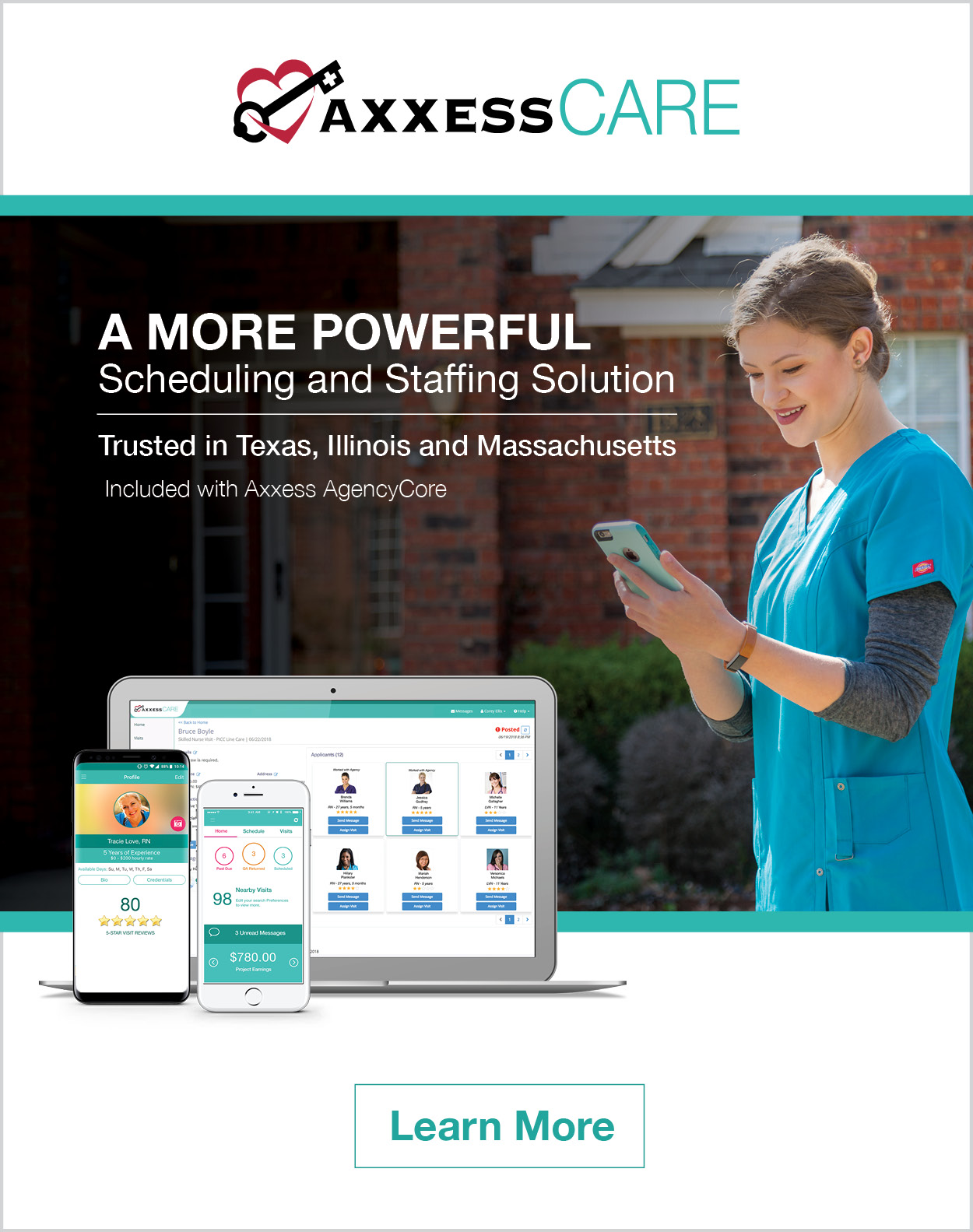
The 2020 Home Health Final Rule was officially published November 8, 2019, and although the Patient-Driven Groupings Model (PDGM) has been the major focus of published reports to date, this final policy document covers many other aspects of home health care.
PDGM and the Behavioral Adjustment
With this published final rule, the unit of payment for home health agencies changes from 60-day episodes to 30-day periods of care, and therapy thresholds as factors for payment are eliminated. Instead of a combination of OASIS items and number of therapy visits made per 60-day period, PDGM relies on patient characteristics such as acuity, primary reason for home health care need, and number of comorbid conditions to calculate payment in 30-day periods.
The final rule also updates the payment rates for home health agencies for 2020, as well as case-mix weights for PDGM 30-day periods of care that begin January 1, 2020 or after. The 2020 30-day payment amount (for those home health agencies that report the required quality data) will be $1,864.03, which reflects a negative adjustment of 4.36% to maintain overall budget neutrality under PDGM.
The Beginning of the End of RAPs
Home health agencies that were Medicare-certified January 1, 2019, or after will continue to send in RAPs in 2020 but will receive no upfront payment. Full payment will occur when the final bill at end of episode is processed. Agencies who were certified prior to 2019 will continue to send RAPs for each payment period in 2020. However, they will receive a decreased upfront payment of 20% of total estimated payment, rather than the previous 60-40% or 50-50% split payments received under the Prospective Payment System used for many years. Beginning in 2021, all agencies will send a zero-dollar payment RAP and all reimbursement will be paid with the final bill’s processing. A penalty will be assessed when the RAP is not sent within five days of admitting the patient. This applies to all 30-day payment periods.
Replacing RAPs with NOAs
Beginning in 2022, RAPs are scheduled to be eliminated entirely. However, since RAPs also establish the agency on file in the CMS payment systems, the elimination of RAPs will require the implementation of a new system for establishing the agency that is caring for the Medicare beneficiary. For this reason, CMS plans to implement a Notice of Admission (NOA) in 2022 that must be filed within five days of the admission date. Late NOAs will be subject to payment penalties as well.
Plan of Care Changes
Some great news came in the final rule document, which allows therapy assistants to furnish maintenance therapy and finalizes changes to the payment regulations related to the home health plan of care. Specifically, CMS is stating that agencies must continue to follow the Home Health Conditions of Participation that require establishing an individualized plan of care with the physician for each patient served.
This plan of care requires a specific diagnosis as the primary reason for home care, as well as listing all unresolved secondary diagnoses that have the potential to impact the plan or require skilled intervention. CMS emphasizes that the Plan of Care requirements must be met in order to create and implement an individualized patient treatment plan that is periodically reassessed by the physician as laid out in the CoPs.
Significant Changes in Condition
In instances where the primary reason for home health care changes from one 30-day care period or another, CMS expects the agency to update the claim with the current focus of care as the primary diagnosis and list all other comorbid conditions in order of acuity and sequencing guidelines per the official guidelines and conventions of the ICD-10-CM code set. Currently under HHPPS, the claim, the OASIS and the Plan of Care’s diagnosis listing must all match. However, under PDGM, CMS is changing the rule so that subsequent 30-day periods of care claims do not have to match the OASIS or Plan of Care diagnosis listing, since they do not expect agencies to fill out a follow-up OASIS just to have the diagnoses match.
Significant Changes in Condition, or SCICs, will continue to be required as per the CoPs; however, SCICs are only to be performed within 48 hours of a finding that the patient’s condition has unexpectedly improved or declined and a new plan must be implemented to address this unexpected change. Agencies should have policies for when SCICs will be performed by their staff, as well as a process to identify and communicate changes with diagnoses that should be made to subsequent 30-day period billing.
Other Elements of the Final Rule
The final rule also finalizes public reporting of Value-Based Purchasing Model’s Total Performance Score (TPS) and Percentile Ranking from the 2020 Performance Year 5 Annual TPS and Payment Adjustment Report for each agency that qualifies for payment adjustment under the HHVBP Model for 2020. In the eight states participating in HHVBP, those agencies that are eligible for payment adjustment due to their performance will be publicly reported.
The Home Health Quality Reporting Program (HHQRP) also sees requirement changes finalized under the 2020 Final Rule. One quality item is deleted, one is revised, two are added, and one is modified. Agencies are required to report standardized patient assessment data. CMS has also decided NOT to remove question number 10 from the HHCAHPS surveys, both the mail and telephone versions.
Payment provisions for home infusion therapy services for 2021 and subsequent years are also finalized and will be explained in subsequent blogs.

